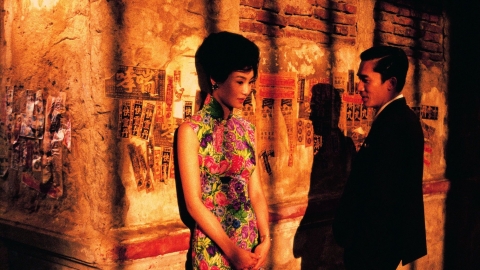Camille Claudel (1988)
Camille Claudelis a film directed by Bruno Nuytten, about the life of 19th-century sculptor Camille Claudel. The film is based on the book by Reine-Marie Paris, niece of poet, writer and diplomat Paul Claudel (Camille's younger brother). Camille Claudel is played by one of France's most famous actresses of the time, Isabelle Adjani. The film won 5 Cesar Awards out of 12 nominations, representing France in the Oscar for Best Foreign Language Film, and another Oscar nomination for Isabelle Adjani.
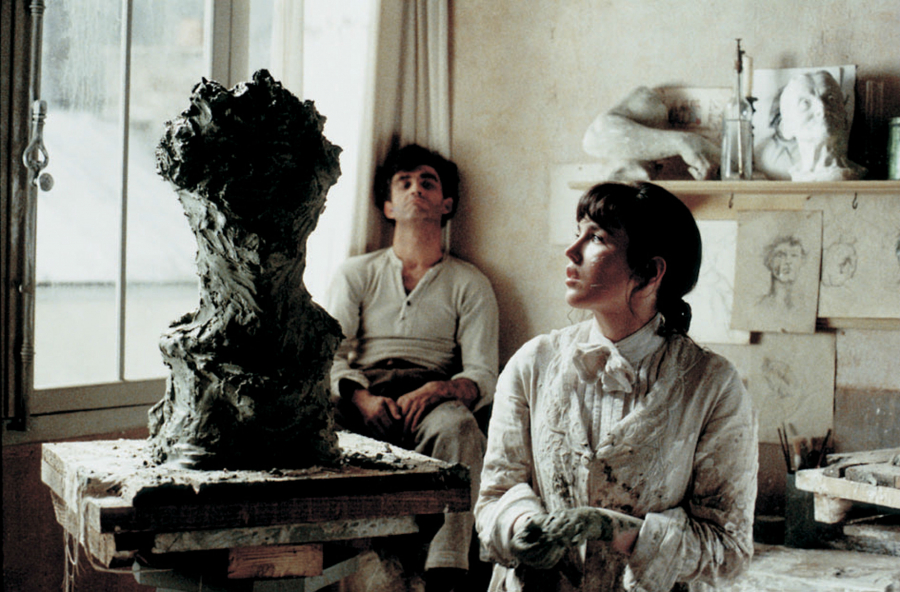
Born and raised in the small village of Villeneuve-sur-Fère, France, young Camille discovered the magic of clay early. When Camille was 18, she began studying with a famous sculptor in Paris. That was Auguste Rodin. Rodin was 42 years old at the time, living with Rose Beuret and had a child only 2 years younger than Camille. The encounter drew the two talented artists into a whirlwind of intense illicit love. Camille's hand was imprinted on many of his works during this period. She was a devoted student, a talented colleague, a beautiful ideal model, and a passionate lover.

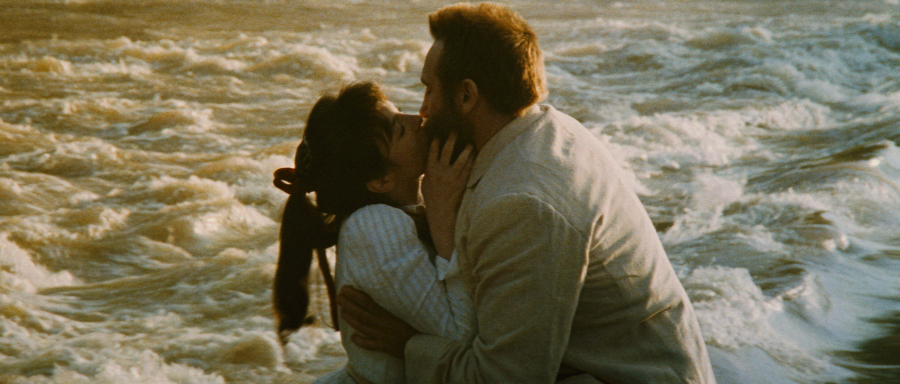
Public opinion scorned the improper relationship, gossiped about her works, claiming that they were the creations of her teacher. Despised and shunned by her mother and family, having to constantly face Rodin's former lover, getting pregnant and then having an abortion, Camille became unstable. In 1893, after deciding to officially break up with her lover, she closed herself in her house which was also her sculpture studio, while Rodin prospered like a kite with world-class orders.

During this time, she asserted herself with many works, made in many versions with different materials: plaster, marble, bronze, and she did not hesitate to use rare materials such as marble to differentiate herself from Rodin. Each work is modern, lovely, bold, strong and honest, subtly expressing human beauty, youth, passion, dedication, suffering, struggle and resistance for love and happiness. Her delicate sensitivity in detailed research, her style of expressing her inner turmoil has stirred up the critics.
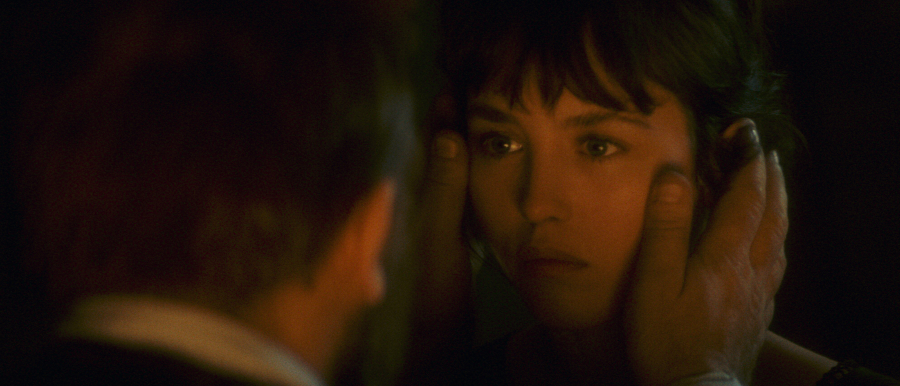
Despite the distance, Rodin maintained his practical support for his lover. He wrote discreetly to the Ministry of Industry, requesting the export of marble materials, and constantly introduced her to famous critics. However, critics admired her statues as much as they were skeptical of her style, sensing in her a hopelessly exhausted woman who wanted to give herself up to art, an eccentric and unusual woman. When the sponsorship and orders gradually decreased and then stopped, Camille resented Rodin, believing him to be the cause of all her misfortunes in her career, and cut off all contact with him.
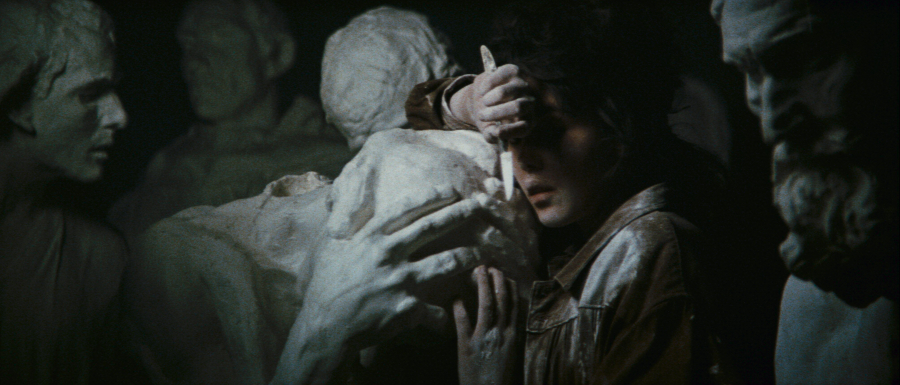
Her artistic creations could not help her forget the pain in love and dissatisfaction in her career. She was immersed in despair, loneliness, poverty, tormented by obsessions, dreams, and paranoia. She used a hammer to destroy countless of her own works as well as many other letters...
Camille's mother hated her for her dissolute and immoral lifestyle, her younger brother Paul was jealous of her talent, and her younger sister Louise wanted to get rid of her to take over her inheritance, so they decided to put her in a mental hospital. Although doctors said it was unnecessary, Camille was still confined there for the last 30 years of her life, ignored by anyone, until her death in 1943.
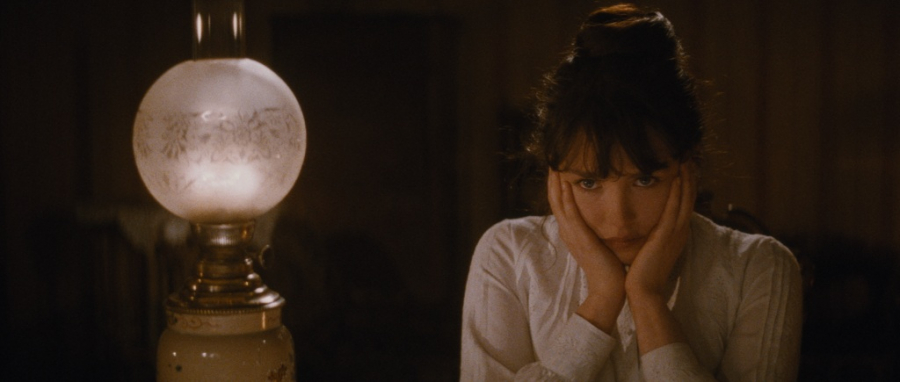
It can be said that Camille was an outstanding genius, she was rich, beautiful, determined, with a bright, promising future, Rodin loved her and Debussy admired her, her life could have been so brilliant! Buta lifetime of talent, a tragic fateCamille lived and died in tragedy, unrecognized for her talent, imprisoned in solitude, never able to realize the desire she expressed between her waking and sleeping slumbers: how happy I would be if I could return to my familiar childhood home in Villeneuve!
Nearly a century passed, until 1988, when the film about Camille Claudel's life was released, more than 70 of the works that survived from the countless works that she herself destroyed found their rightful and worthy place in the history of world art. The Musée Camille Claudel, opened in March 2017, is a national museum of France, located in the town of Nogent-sur-Seine, dedicated to the works of Camille.
Frida (2002)
In 2002, the movieFridaInspired by the life of the Mexican painter Frida Kahlo (1907 - 1954), it became an artistic event when it was nominated for 6 Oscars and won 2. This is the first time this legendary and mysterious painter has been successfully portrayed on the silver screen with the wonderful performance of Salma Hayek.
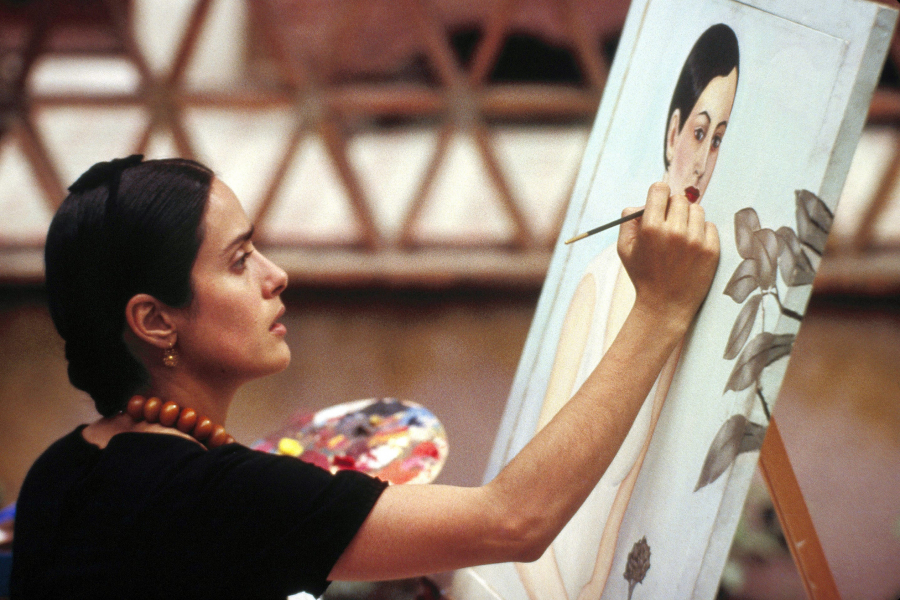
Frida was seriously injured in a bus accident at the age of 17, breaking almost every bone in her body, and was thought to have died. Although she recovered and was able to walk again, she remained in excruciating pain for the rest of her life, and underwent 35 surgeries, mainly on her spine and legs. During her time in the hospital, her father created special easels so that his daughter could draw in bed.
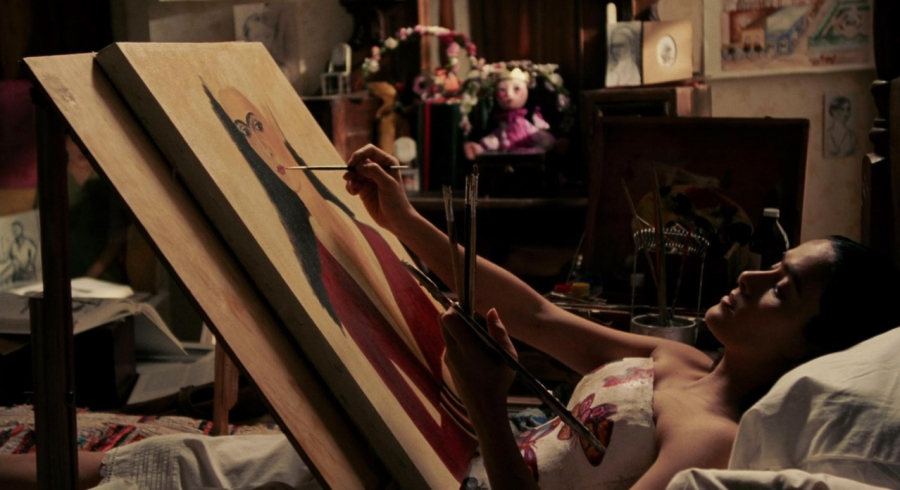
She often painted herself. Frida Kahlo once said: "I paint myself because I am lonely. And because I am what I know best." Her life was surrounded by mirrors: in front of her wardrobe, next to her dressing table, even hanging on the wall of her garden hut. This was the easiest way for Frida to see and paint herself.
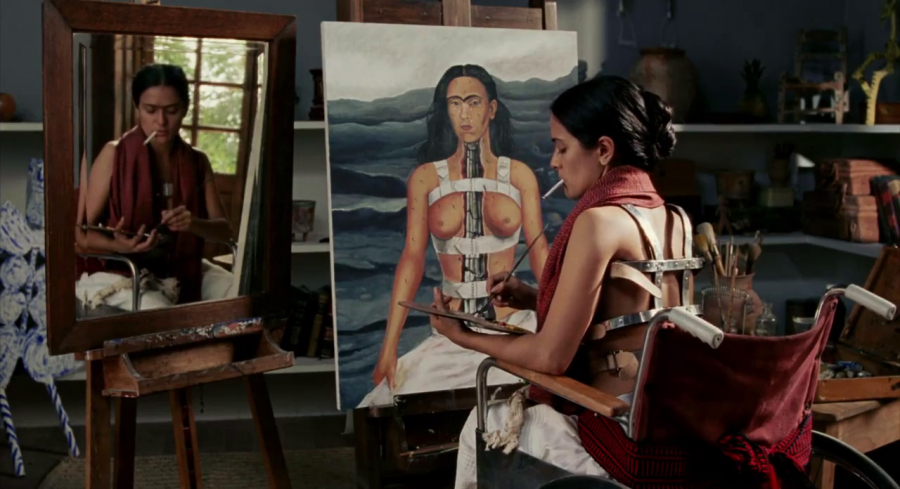
But the film does not simply tell the story of Frida's strong, resilient nature and burning passion for painting, but also recreates part of her stormy love for her husband - the famous Mexican painter Diego Rivera, or her passionate but short-lived love for the Russian politician Leon Trotsky... and her homosexual relationships.
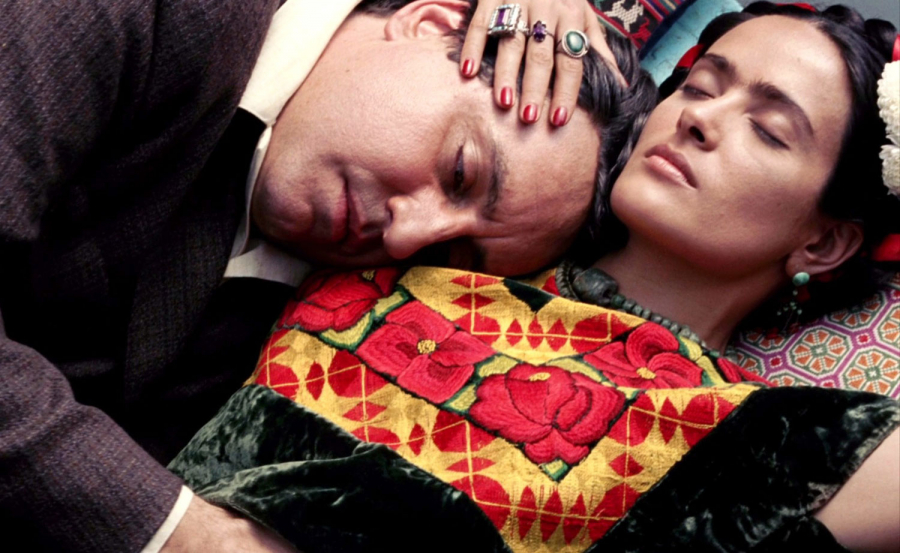
In 1929, despite her family's disapproval, Frida married Diego. Their marriage was often troubled, as both were temperamental, hot-tempered, and unfaithful. They divorced in 1939 and remarried in 1940, each marriage being just as troubled as the first. Marital unhappiness, miscarriages, and the pain of betrayal are the main themes in Frida's works.
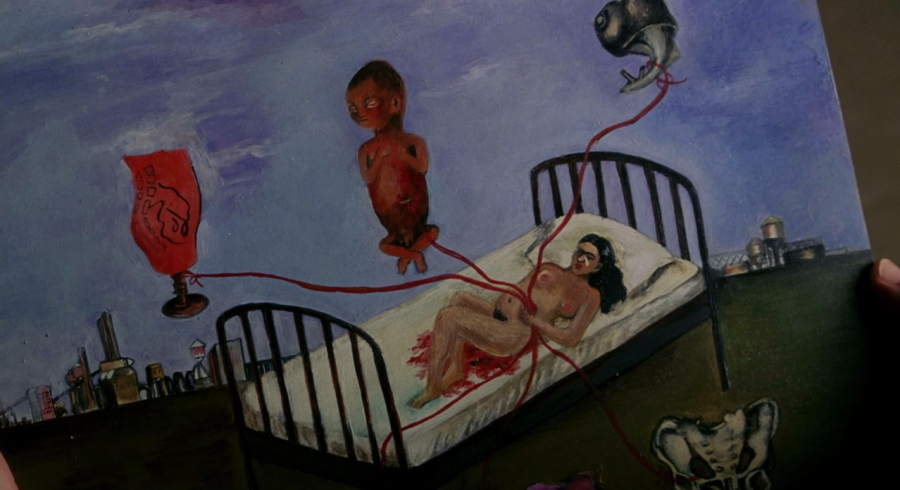
Frida Kahlo is beautifully portrayed in the film, not only through her works and love affairs, but also because of her ideals in life and the way she promoted indigenous culture through the Mexican Indian costumes she often wore and the rustic jewelry she often wore, creating an endless source of inspiration for future fashion designers.
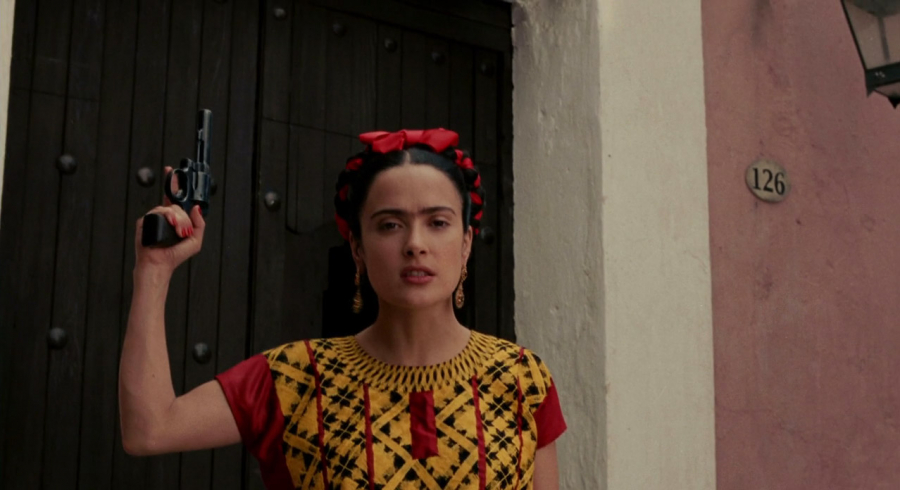
Her whole way of life, which was something very wild, impulsive and fierce, shone brightly from the canvas to the silver screen. Frida Kahlo lived a short but passionate and intense life, experiencing much suffering but never losing her desire.LoveandlivingShe was like a flame, like fireworks, exploding and overwhelming people, then fading away, but without any regrets.
Big Eyes (2014)
Biographical filmBig Eyesis a “strange” project in Tim Burton’s filmmaking career. The film is inspired by the true story of one of the most successful painters of the 1950s and early 1960s. Butwho is that
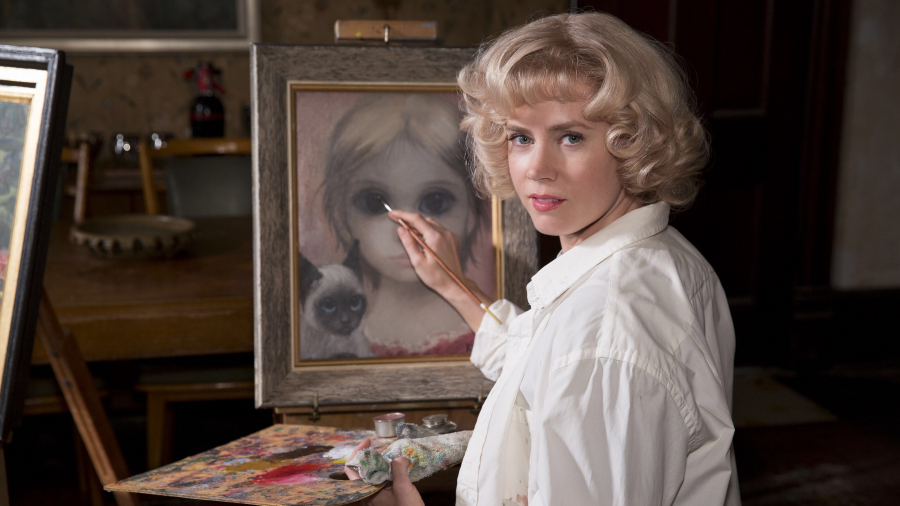
After fleeing a broken marriage, Margaret met Walter Keane around 1950. The two quickly fell in love, sharing a passion for painting. They gradually became famous for their paintings of babies with large, haunting eyes, a reflection of her own unhappy childhood. However, her talent went unnoticed and she had little opportunity to develop in the male-dominated society of the time.
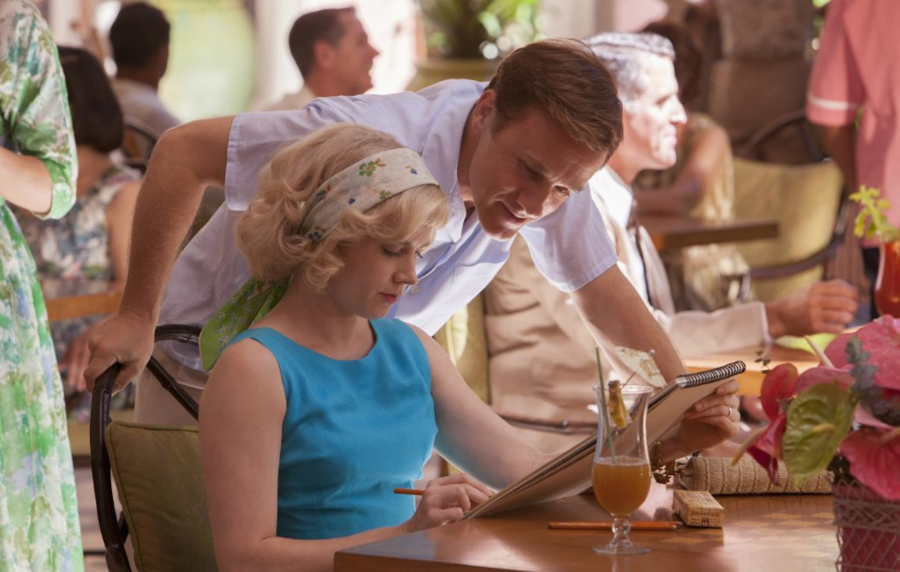
Walter initially tried to include his wife’s paintings in the advertising campaigns of the art gallery he opened. Margaret’s seemingly “trivial” paintings unexpectedly brought the gallery owner much attention and many inquiries.
Margaret always signed her paintings as Keane, so Walter could easily sell them as the sole author without revealing his deception to his wife. Walter also tried to learn Margaret's painting style but was unable to. Margaret began to discover the truth after 2 years of living together but decided to keep quiet because she thought people would pay more for paintings by men.

By the 1960s, Keane imitations were being mass-produced and sold everywhere. As the paintings sold well and Walter opened more galleries, Margaret was forced to work up to 16 hours a day to keep up with demand, while Walter went out to brag and enjoy the fruits of his wife’s labor. As time went on, Margaret’s eyes in her paintings became sadder, reflecting her despair. Realizing that her marriage had pushed her to the brink of depression, Margaret divorced Walter in 1965.
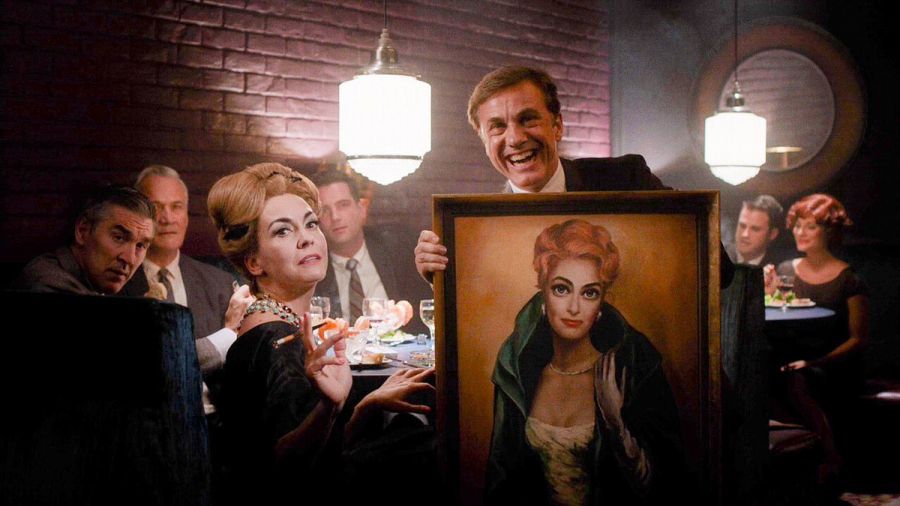
Margaret then tried to regain ownership of her works. The battle culminated in a courtroom battle in 1986. Margaret immediately painted a picture in front of the judge to prove that she was the true author behind the famous paintings. Walter refused to paint, claiming that he had a bad shoulder. As a result, Margaret won the case and received $4 million in compensation. From then on, Margaret made her name in art history, and she continues to create in San Francisco to this day. Walter Keane never painted another picture again until his death. His name faded into obscurity, remembered only as a shameless fraud who had been exposed.
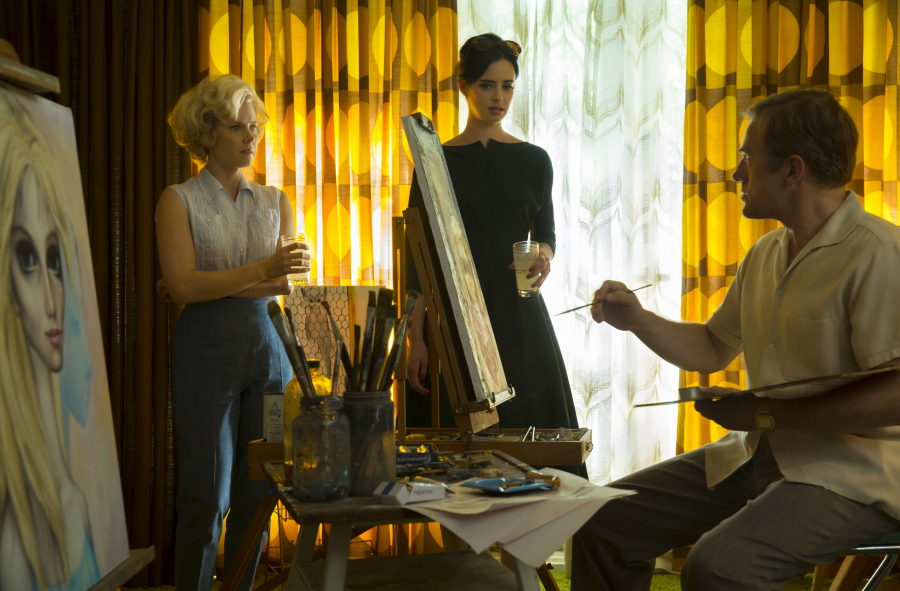
Through Margaret's own life story, the film recreates the values and cultural features typical of the art and aesthetics of the 1950s. The vivid yet entertaining authenticity ofBig Eyesfrom the soft and flexible filmmaking style and the extremely interesting dialogue. The filmmaker's own views on art are embedded through subtle satirical lines and a series of satirical details with many hidden meanings. Thanks to that, without needing to dramatize the plot, the film still strongly depicts the male chauvinism and the habit of enjoying art following trends that caused pain in the past decades.

It has been argued that this is Tim Burton's most heartfelt and personal work.Big Eyesspeak up for female artists in particular and artists in general about labor injustice as well as the difficulty in protecting the fruits of that labor.
Woman in Gold (2015)
InWoman in Gold, veteran British actress Helen Mirren plays Maria Altmann - an 87-year-old Jewish woman who survived World War II. The film is named after the portrait of Adele Bloch-Bauer, Maria's aunt, painted by Austrian artist Gustav Klimt in 1907. The painting was stolen from the Bloch-Bauer home by the Nazis, who sought to erase the model's Jewish origins and renamed it Woman in Gold.

This is one of five paintings by Gustav Klimt returned to Maria Altmann by the Austrian government in 2005, after a long legal battle. At that time, the painting was on display in the Belvedere Museum, considered the “Austrian Mona Lisa” and a “national treasure”...
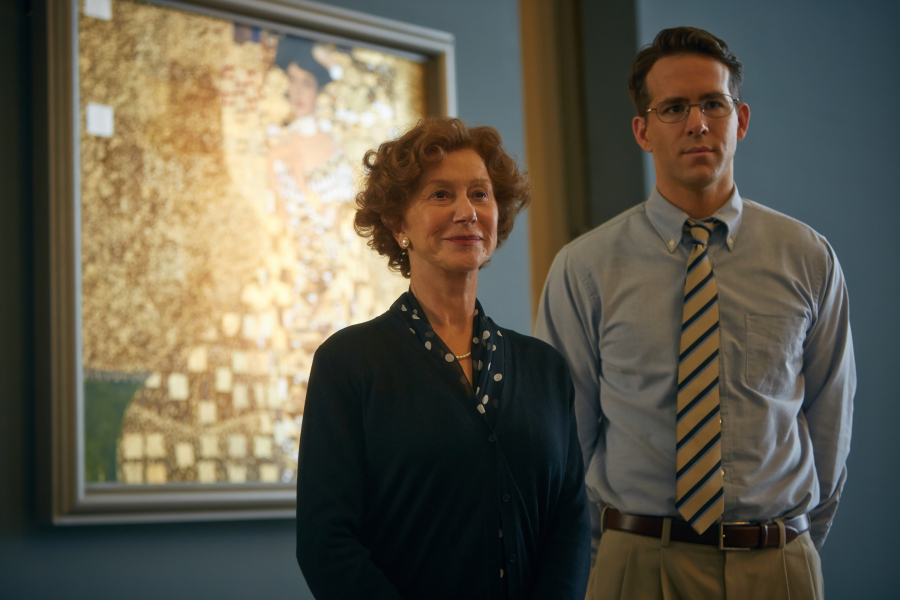
The main character in the film, Mrs. Maria, is neither a painter nor a model, but her life is closely linked to the ups and downs of the times and the ups and downs of the painting's fate. Together with a young lawyer with little experience but full of enthusiasm, she fought to regain her family's precious paintings. For her, it was not only a property worth hundreds of millions of dollars, but also her love for Aunt Adele, memories of a peaceful time in Vienna, and evidence of the war crimes that she and many other Jews had to endure. Maria did not want all of that to be buried by time, Aunt Adele's name to be erased, becoming only a "golden woman", and the younger generation to gradually forget the genocide that happened in this splendid city. Although she was not directly involved in the creation of the Adele portrait, Maria's lawsuit turned her into a "muse", bringing the bloody history behind the painting to light, and forever entering the history of painting as a warm and humane part of the cold gold leaves.
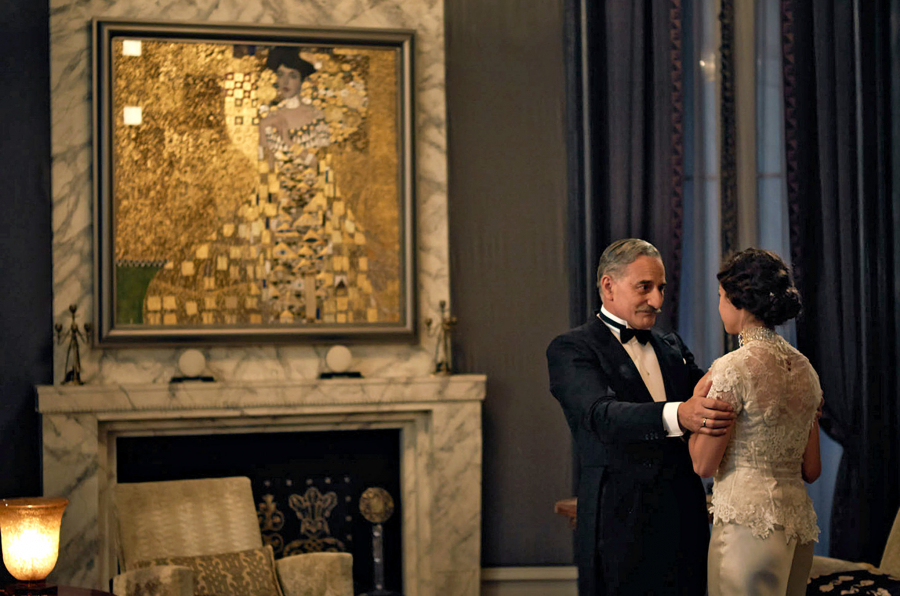
Interspersed with the fascinating details of the legal battle with the Austrian authorities, memories that Maria wanted to bury suddenly resurface about her beloved aunt Adele, about her peaceful and happy childhood years in a wealthy family in Vienna, about her marriage to a young artist...
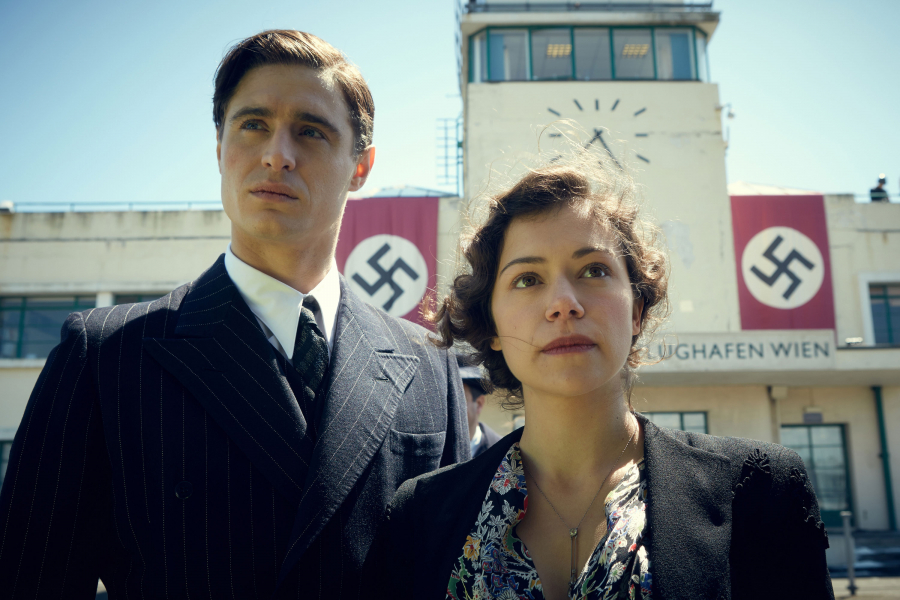
Everything collapsed when the Nazis occupied Austria and Maria's family, like millions of other Jews, suffered the same tragic fate with no way out. Through the footage, Maria takes the audience back in time to witness the moments of history.

Although only appearing briefly in a few scenes, the character Adele Bloch-Bauer also left a strong impression on the audience with her beautiful, elegant and regal demeanor, along with her deep and gentle thoughts. Klimt painted Adele with love and respect, Maria looked at Adele's portrait with many sad and happy memories, and posterity will forever look at her.gilded womanas an icon of 20th-century European art and history.
The Dazzling Life of Hokusai's Daughter (2017)
The film is based on the life of ukiyo-e artist Katsushika Ōi. She is the third daughter of the famous artist Katsushika Hokusai. Perhaps no introduction is needed, everyone knows Hokusai's works, which are considered symbols of Japanese art and culture. Ōi is not as famous as her father, but anyone who has taken the time to learn about Ōi's paintings will surely not be able to deny that she is also very talented.
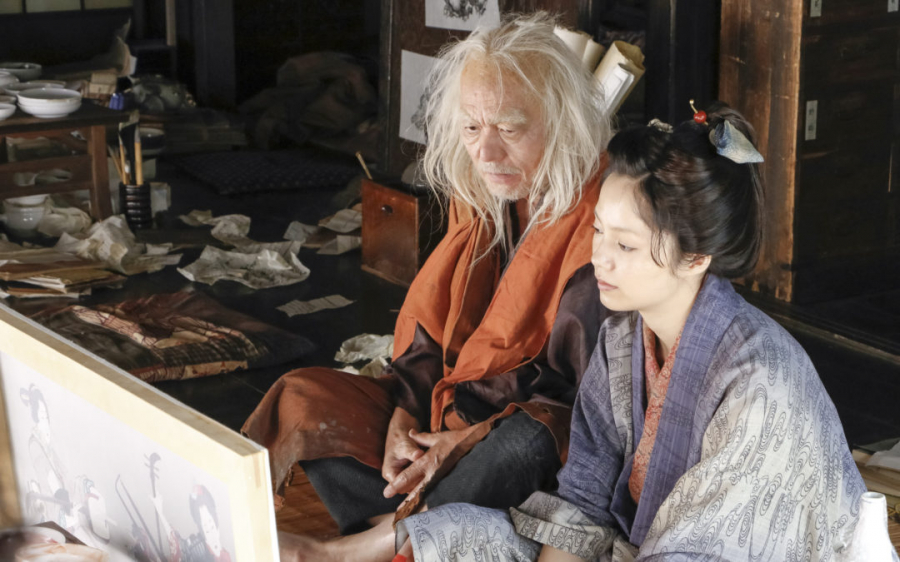
As a child, she studied painting with her father and was very interested in it. When she grew up, she divorced her husband a few years after getting married, then returned home to take care of and help her father. Ōi assisted Hokusai in completing the "36 Views of Mount Fuji" series.
When Hokusai grew old and could no longer use the brush freely, Ōi became his "brush" and painted in his stead. It was then that she began to develop a strong passion for colors and eventually developed her own style of painting. Hokusai once said, "The beauties I paint myself cannot compare to the beauties Ōi paints." Indeed, Ōi was very good at drawing beauties as well as calligraphy.
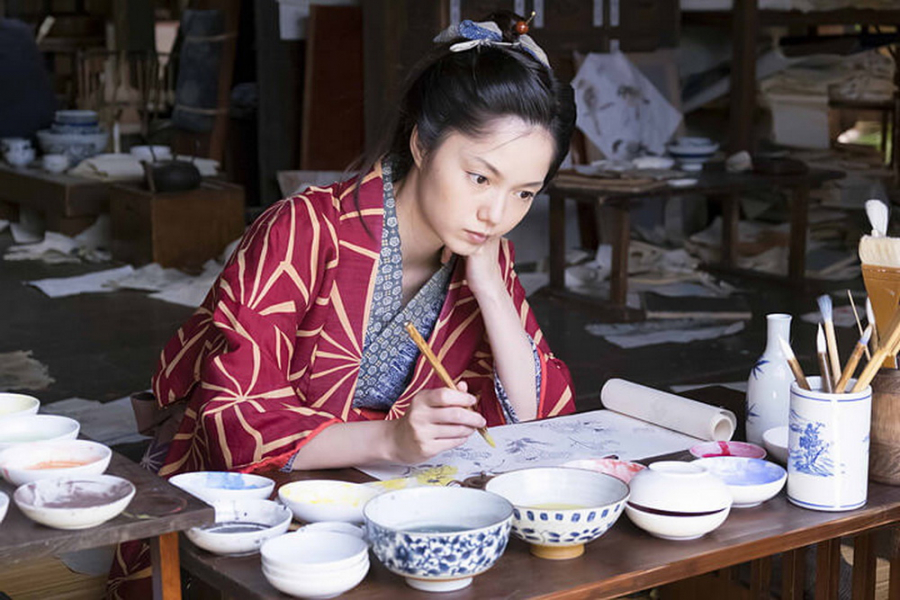
Ōi inherited not only his father's artistic talent but also his free spirit. Both of them were indifferent to material possessions, nor did they care about household chores. Father and son would often spend all day drawing, not cooking but going to the nearby market to buy ready-made food. After a while, when they found the house so messy and dirty that they could not live there, they would pack up and move.
Perhaps in modern times, the lifestyle of Katsushika and his father would not be considered scandalous, but simply the free-spirited style of an artist. But in the 19th century, in a feudal, patriarchal society like Japan, it was easy to imagine the gossip of the world about Katsushika Ōi. But she did not care, her world was the world of painting, even though love had disappointed her, even though everyone - including her mother - did not understand her, in her eyes there was always a bright sunshine that guided her to overcome all obstacles in life.

But after Hokusai passed away, Ōi's life suddenly changed. How? No one knows. All traces of her seemed to have disappeared from the world since then. But it can be guessed that for a middle-aged woman who only knew how to hold a brush and paint, alone without support in feudal society, things were not easy. The film only recounts that she died alone, a few years later. But it can be said that, although only humbly hiding behind the shadow of her famous father, Ōi still left special marks in Japanese painting with her talent and lifestyle that went beyond the standards of the time, and her name will never be forgotten.
























